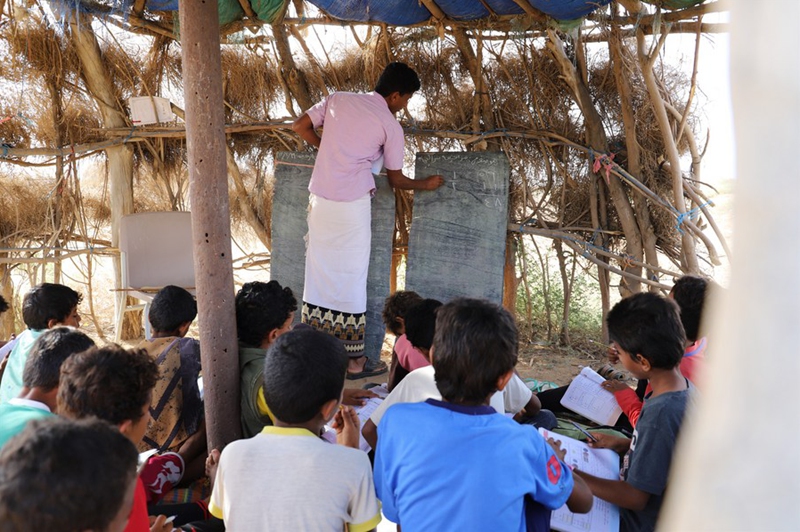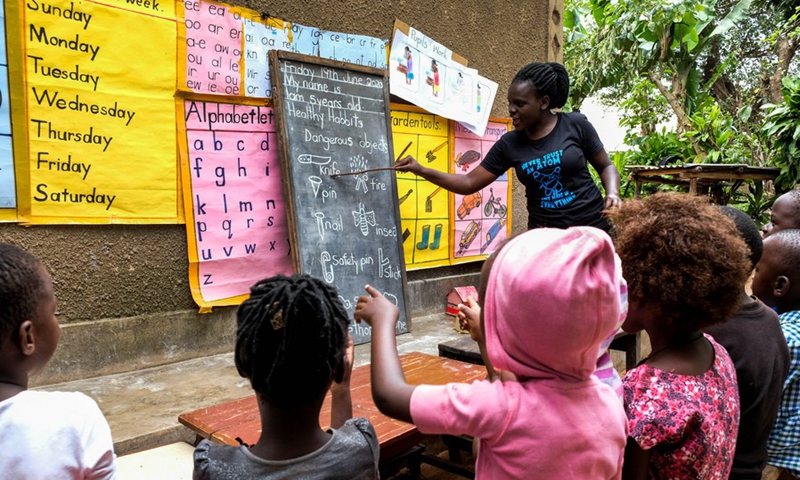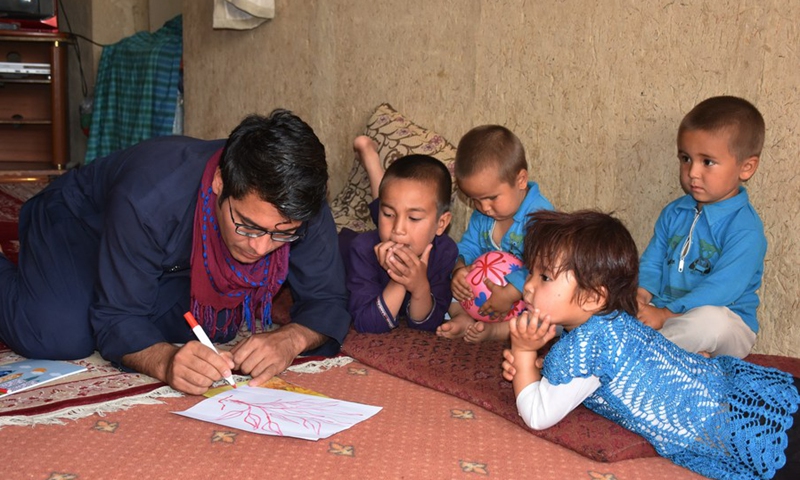Two thirds of world's school-age children have no internet access at home: UN report
Source: Xinhua Published: 2020/12/2 14:24:05

A teacher teaches students in a hut used as classroom at a school in Haradh district of Hajjah Province, Yemen, Feb.19, 2020.(Photo: Xinhua)

Kindergarten teacher Juliet Namanda teaches children at her home in Kampala, capital of Uganda, June 19, 2020.(Photo: Xinhua)

A father teaches his children drawing during the lockdown of COVID-19 pandemic in Mazar-i-Sharif, Balkh province, Afghanistan, May 9, 2020.(Photo: Xinhua)
Two thirds of the world's school-age children - or 1.3 billion children aged 3 to 17 years old - do not have internet connection in their homes, according to a new joint report from the UN Children's Fund (UNICEF) and the International Telecommunication Union (ITU) published Tuesday.
The report "How Many Children and Youth Have Internet Access at Home?" notes a similar lack of access among young people aged 15 to 24 years old, with 759 million or 63 percent unconnected at home.
"That so many children and young people have no internet at home is more than a digital gap - it is a digital canyon," said Henrietta Fore, UNICEF executive director. "Lack of connectivity doesn't just limit children and young people's ability to connect online. It prevents them from competing in the modern economy. It isolates them from the world. And in the event of school closures, such as those currently experienced by millions due to COVID-19, it causes them to lose out on education. Put bluntly: Lack of internet access is costing the next generation their futures."
Nearly a quarter of a billion students worldwide are still affected by COVID-19 school closures, forcing hundreds of millions of students to rely on virtual learning. For those with no internet access, education can be out of reach. Even before the pandemic, a growing cohort of young people needed to learn foundational, transferable, digital, job-specific and entrepreneurial skills to compete in the 21st century economy.
The digital divide is perpetuating inequalities that already divide countries and communities, the report notes. Children and young people from the poorest households, rural and lower income states are falling even further behind their peers and are left with very little opportunity to ever catch up.
Globally, among school-age children from richest households, 58 percent have internet connection at home, compared with only 16 percent from the poorest households. The same disparity exists across country income level as well. Less than one in 20 school-age children from low-income countries have internet connection at home, compared with nearly 9 in 10 from high-income countries.
Nearly a quarter of a billion students worldwide are still affected by COVID-19 school closures, forcing hundreds of millions of students to rely on virtual learning. For those with no internet access, education can be out of reach. Even before the pandemic, a growing cohort of young people needed to learn foundational, transferable, digital, job-specific and entrepreneurial skills to compete in the 21st century economy.
The digital divide is perpetuating inequalities that already divide countries and communities, the report notes. Children and young people from the poorest households, rural and lower income states are falling even further behind their peers and are left with very little opportunity to ever catch up.
Globally, among school-age children from richest households, 58 percent have internet connection at home, compared with only 16 percent from the poorest households. The same disparity exists across country income level as well. Less than one in 20 school-age children from low-income countries have internet connection at home, compared with nearly 9 in 10 from high-income countries.
Posted in: AFRICA